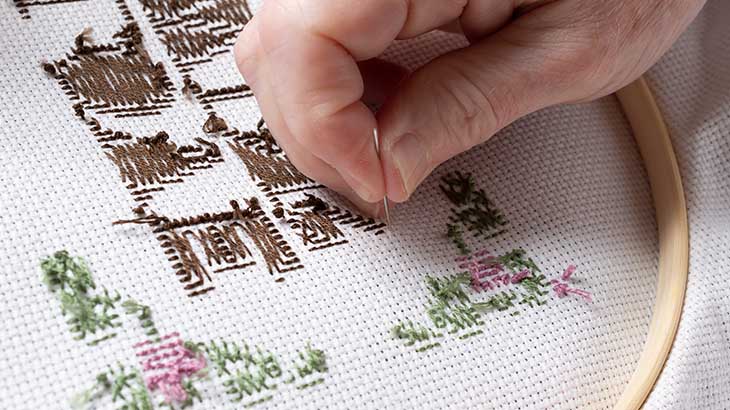- December 1, 2022
- Posted by: Andrew
- Category: Uncategorized

Embroidery is the craft or skill of embellishing fabric with thread and needle. Embroidery techniques are now commonly utilized to display custom artwork, names, and logo designs of organizations, clubs, and other businesses. Counted thread embroidery, whitework technique, candle wicking embroidery, shadow work embroidery, and many more are examples of machine-driven and Custom Embroidery processes. Let’s take a quick look at several embroidery techniques.
The term embroidery is derived from the French word broderie, which means adornment. Embroidery has been as a craft since the invention of cloth. The origins of embroidery can be traced back to the Cro-Magnon period in China and the Near East around 30,000 B.C. Embroidery has been used for ages all across the world. France invented the first embroidery machine during the Industrial Revolution.
- Embroidery using Counted Threads
This embroidery technique includes numbering thread in fabric for each stitch. As a result, symmetrical stitches are produced. One of the most popular counted thread embroideries is cross stitch. A common method is blackwork embroidery.
- Embroidery Outline
The design outline is generally worked with various stitches such as chain stitch, back stitch, stem stitch, and outline stitch in this embroidery technique. In this technique, the stitch is created by overlapping the backstitches to create a new pattern.
- Embroidery in Whitework
Whitework embroidery is typically done on white fabric with white floss. This is also known as French Laid work. This technique always includes many embroidery techniques such as BroderieAnglaise, shadow work, and so on.
- Embroidery using Candlewicking
Candlewicking embroidery is a type of whitework embroidery method that is different from traditional whitework embroidery. On the unbleached muslin, this needlework typically employs an unbleached thick cotton thread. Candlewicking is classified as a “traditional embroidery technique” because it employs an ancient technique known as the “colonial knot.” On the design line, these colonial knots are created.
- Embroidery Patchwork
The little pieces of cloth are frequently assembled on another fabric substrate in this technique. They are often grouped aesthetically. This technique employs either machine or hand stitching.
The patchwork technique is used to create a more dramatic impression, and you may customize your design with any type of stitch you like. This embroidery method is mostly used to embellish quilts.
- Embroidery with Shadow Work
Herringbone stitch is used in shadow work embroidery and is commonly employed on semitransparent or transparent textiles. As a result, the shadow work can be seen on the face of the cloth in a wonderful way. This embroidery technique is typically performed on sheer or semi-sheer, lightweight fabrics such as georgette, voile, lawn, organza, organdie, batiste, muslin, and many others.
- Embroidery of Fish Scales
The scales of fishes such as goldfish are commonly used to create needlework designs in fish-scale embroidery. The majority of the embroidery is done on velvet. The scale of the fish is prepared first, and then holes are created at the base of each scale. It can then be embroidered onto the fabric.
Bottom line:
Embroidery can be done by hand or by sewing machine. When compared to digital printing and other printing methods, this technique is very cost-effective and dependable. Each embroidered project can reflect your personal style thanks to the numerous fabric, stitch, and thread combinations available.
